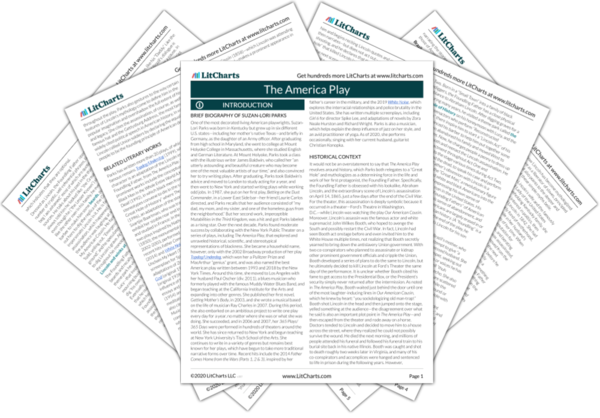Throughout Act One, the Foundling Father periodically interrupts his monologue to acknowledge two idols he has brought onstage: a bust and a pasteboard cutout of Abraham Lincoln. The Foundling Father announces, and then performs, “A nod to Mr. Lincolns bust” and “A wink to Mr. Lincolns pasteboard cutout.” His wink and nod distance him from the character he is playing: they show that he recognizes that he is riffing on Lincoln’s identity, but also has lost his own identity outside of the character of Lincoln (to the point that he has no real name in the play). He “nods” to Lincoln as though to acknowledge and praise the Great Man, but “winks” as though sharing an inside joke with him, and announces each of these beforehand as though to remind the audience that he is constantly turning citation into a performance. So the wink and nod are at once a show of admiration for Lincoln and acknowledgment of the unbridgeable gap between the Great Man and the Lesser Known: as cheap, even gaudy images of greatness, the bust and cutout recall the Foundling Father himself, who is both a cheap, imperfect copy and a spirited, dedicated actor driven by an admirable desire to make his mark on the world.
Of course, in its own way, the play itself is also a nod and a wink to history: it both praises Lincoln and good-humoredly mocks the way his legacy has been reduced to the image of a man with a hat and beard. It is also significant that Brazil later digs up the bust of Lincoln and adds it to his “Hall of Wonders,” which illustrates how this process of mythologization can work: Brazil unironically turns the junk of the past into a thing worth marveling at.








